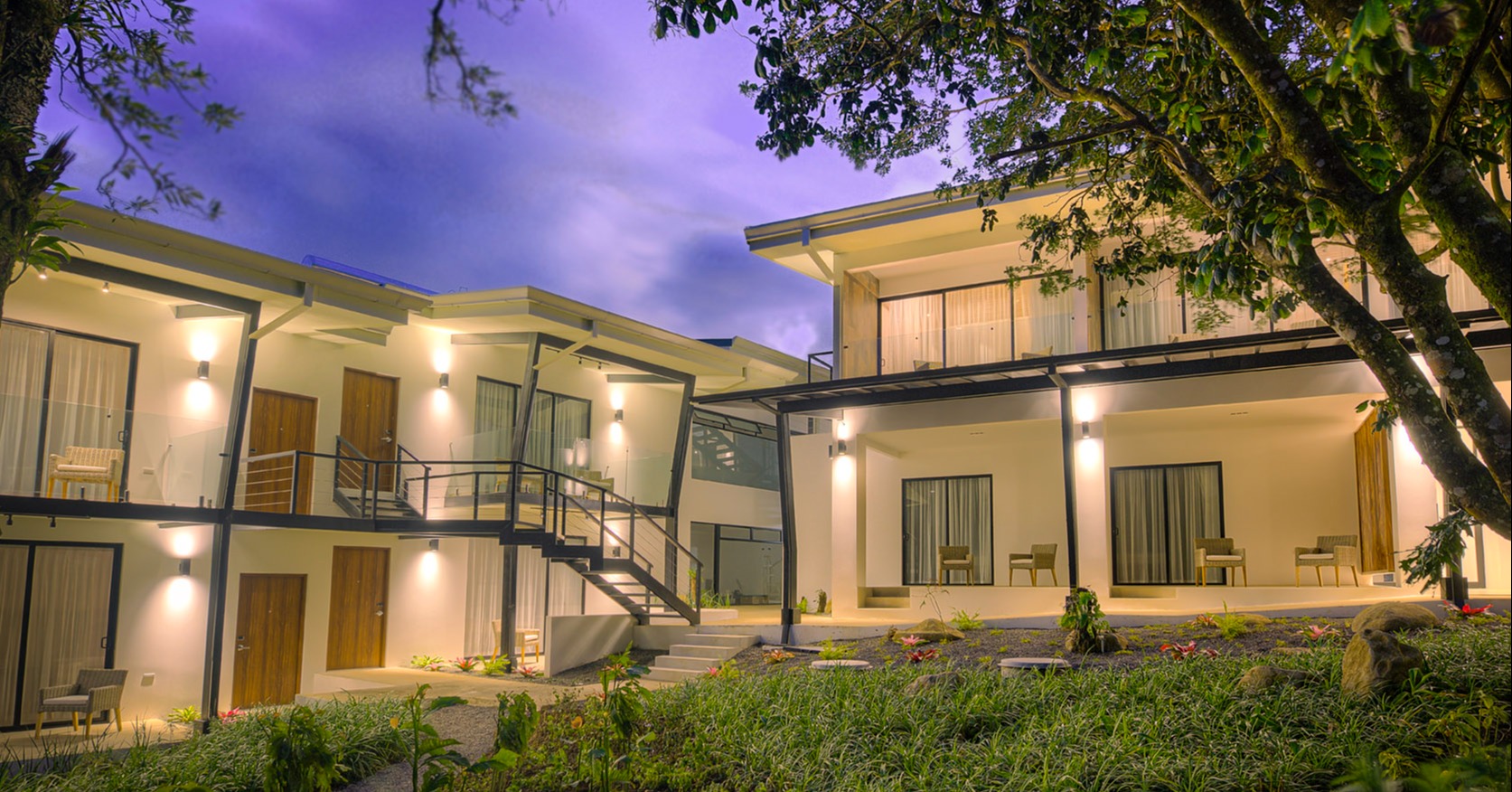A Traveller’s Guide to Costa Rica
As someone who was born and raised in the frozen north, “vacation time” usually referred to a couple weeks in December/January. Mostly because by then we were already tired of the cold and ready for a break.
We would spend most of November dreaming of sunny skies and tropical beaches. Now that I live in Costa Rica, I get to see the other end of the spectrum. I notice the ebb and flow of foreign travellers and learn to work around it.
For those of you planning a trip, it’s really helpful to understand the difference between the various tourist seasons, and what they mean to you as a traveller. Many people ask us what time of year is the best, but there are so many variables to that question it's hard for me to answer. Plus, most people will tell you that there’s never a bad time to visit Costa Rica (me included!)
Probably the most important part of planning a visit is your own expectations. What one person views as a negative might be exactly what someone else is looking for, so it’s all subjective. That’s why I’m going to use this post to tell you about the various seasons, in terms of weather, activities, and tourism, and then you can decide for yourself which time of year appeals to you.
I’ll start with the weather since that is the question I get the most from friends and family.
What is the Weather Like in Costa Rica?
I’m not a meteorologist, so I’m going to keep this fairly simple. As a general rule, the temperature in most of Costa Rica varies between 21 and 27 degrees celsius (or 71 and 81 degrees Fahrenheit) all year long. That’s an overall average. Costa Rica has several microclimates, so there will be some areas of the country that trend hotter (like Guanacaste), and some areas that are cooler (like the Monteverde).
Elevation has an effect on temperature, so areas which are in the mountains, can be warm at the lower elevations, but cool enough to wear a few layers when you reach the misty areas near the peak. In the case of Monteverde where the Ocotea Hotel is located, you can visit several of these microclimates in a short span of time by hiking up the mountain!
San Jose also tends to be cooler than the coastal areas. The north-west portion of Costa Rica is the hottest and driest, home to one of the world’s rarest, most interesting microclimates — the tropical dry forest.
For those of you who enjoy visuals, here are some annual averages by area according to Weather and Climate.com. This is actually a good resource if you’d like more information.
Average Temperature by Area
San Jose (Central Valley)
Monteverde (Cloud Forest)
Tamarindo (Northern Pacific Coast)
Manuel Antonio (Southern Pacific Coast)
Puerto Viejo (Southern Atlantic Coast)
As someone who lives here, I’ve seen some 35 degree days (95 Fahrenheit) but 30-31 (86 Fahrenheit) is much more common.
What’s frustrating for many travellers is understanding the rainy season. If you look on any weather app for any place in Costa Rica from May to mid-November, the app will probably tell you there is a 100% chance of rain, and that’s really misleading.
It does rain often during the rainy season, and yes when it rains, it tends to come down pretty energetically. However, in most areas it rains mainly in the afternoon for about an hour (called aguaceros) and overnight. That means you can still get out and enjoy nice weather as long as you schedule dry activities in the morning. Locals like to say afternoons are for R&R (rain and relaxation), and you end up getting some ridiculously beautiful sunsets thanks to the moisture in the air!
October is the wettest month in Costa Rica, so residents settle in to wait it out and some businesses use the downtime to perform maintenance. There is actually something really soothing about the sound of rain on the leaves.
Here are some lovely graphics to help you wrap your head around the annual rain patterns.
San Jose
Monteverde
Tamarindo
Manuel Antonio
Puerto Viejo
As you can see, areas on the Pacific side tend to have an extreme swing from wet to dry, and that’s why the locals use the term “green season” or “high/dry season” as opposed to summer and winter. In my personal opinion the shoulder seasons are actually the most pleasant time of the year because you get a bit of both worlds instead. When people ask, I tell them to come in November — the rain is starting to subside, everything is green and lush and the temperature is tropical but comfortable. I would also like to point out that while the bursts of rain can be heavy in the green season, it's still a nice warm rain, so it doesn’t need to ruin your fun.
Natural Events and Cycles
While many tourists travel based on the weather, it’s not the only reason to travel in certain seasons. What I mean by this is that there are other ¨seasons¨ to consider. As a country that has a thriving ecotourism industry, it attracts thousands of people annually who are interested in natural events.
Annual bird migrations can be cause for celebration if you’re a birder. Many people enjoy watching baby turtles hatch and make their way into the surf each year. Others come for whale-watching and pods of dolphins which come to the warmer waters when the calves are young.
Turtle Time!
Costa Rica is home to 5 species of turtles, (all of which are endangered); Green Turtles, Leatherbacks, Hawksbill, Loggerhead and Olive Ridley. Areas like Tortuguero on the Northern Atlantic Coast and Ostional Beach on the Nicoya Peninsula are world famous for their turtle conservation efforts.
Each year between March and October thousands of these gentle creatures pull themselves out of the surf to lay their eggs in the sand. 7-10 weeks later, the babies emerge all along and make their way against all odds through the sand and into the ocean. It’s a truly inspiring sight!
This is a video I took when we went… baby turtles are so cute!
Whale Watching
The whale watching in Costa Rica is second to none, mainly because of its location in the center of the globe. Whales from both poles head to the warm waters off the Pacific Coast to mate and to care for their young. There are actually two good periods to visit the country and watch them. You can see them along the entire pacific coast but the area around Uvita is considered to be the best area for up close and personal encounters.
They can be seen from Mid-July to Mid-November and again from Mid-December to April. We met a family of humpbacks with a calf while sailing two years ago. The calf was almost as big as our 35’ boat and the parents who came within a few feet of the boat to gaze at us were gigantic.
This kind of encounter really makes you rethink your place in the circle of life, and every year, thousands of tourists climb on boats and head out into the blue hoping to spot a plume in the distance.
Dolphin Season
While dolphins are always in the waters of Costa Rica’s Coast, they are much more likely to be spotted in large numbers from December to March. Like the whales, they come to the warmer waters near the equator to have their calves and care for the young. There are several species including bottlenose, spinners, pseudo-orcas and spotted dolphins to be seen.
What About the Crowds?
This is another common question from people who are planning to come to my new home for a visit. You can break it down like this.
Peak Tourist Season: Mid-December to Mid-January (Holiday Travellers) and July/August (Families with kids out of school)
This is the busiest time of year, everything is in full swing. If you enjoy the vibe of lots of people having fun and you don’t mind crowds, it’s a popular time to visit. The upside is that you are now fully into “dry” season so unless you are in the central valley or on a mountain top, the weather will be the classic tropical paradise every day. The downside is that accommodation and flights are both at the highest prices of the season. If you travel during “holiday season” be sure to pre-book everything to nail down good spots, reservations, and travel accommodations.
High Season: Late November to April
This time of year will have mid-level rates for flights and hotel room, tourism is brisk so you may have some line-ups and it’s best to pre-book many excursions to make sure there is room. On the upside, all of the businesses geared to tourists will be up and running. If you travel near the start or end of the season, you may see some rain, but activities roll on no matter what!
Low (“green”) Season: May to Mid-December
During low season you can enjoy the lowest rates in both flights and accommodations, you will miss the crowds and see Costa Rica at its absolute lushest. You will usually see a healthy amount of rain, but also plenty of sunny mornings. When the rain comes down, it does so in short, intense bursts, but it’s also musical, and fresh smelling. If you're like me and you love a good storm, the sheet lightning brightens up the whole sky, and it’s so much fun to sit and watch.
Apart from the lush green weather and occasional storm, things are quiet. There are a few tour companies that scale down for this time of year, so it’s worth checking ahead of time to make sure you don’t get caught off guard by a “closed for the holidays” sign.
All in all though, I really enjoy the quiet laid-back vibe, and having the beach all to myself. (Okay, I’m exaggerating, there may be a few other people on the beach, and several dogs… but it is nice and quiet.)
So, When is the Best Time To Visit Costa Rica?
The answer to that question lies entirely with you. My suggestion is always the same. Ask yourself what you want to accomplish with your trip.
If the answer is that you want to see all there is to see and do all there is to do, then I recommend a visit in late November or February. The rates aren’t as high but the season is in full swing and the drier weather won’t interfere with any tours you might wish to take.
If the answer is that you want to get away from the daily grind, slow down and get in tune with nature, then I would recommend May/June or early November (I love November - can you tell?) This time of year will give you the most peace, and the lowest rates, while still enjoying the beauty of lush greenery, plenty of wildlife, and quiet beaches. Book your outings in the morning and spend your afternoons reading a book in the hammock and listening to the music of the rain on the leaves.
Whenever you decide to visit my new home, you’ll find a warm welcome and a happy, carefree lifestyle, so pick a season that appeals to you and come on down. There’s beer in the cooler and a hammock with your name on it.
Pura Vida!




